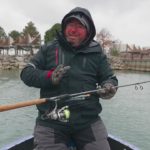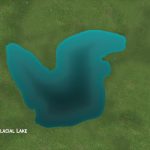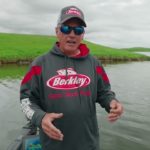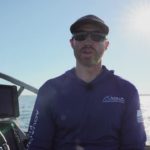Walleye Travel Plans
Walleyes work hard in April and May. They cover great distances and expend tremendous amounts of energy before, during and after their annual spawning ritual.
Now it’s time for a vacation, and walleyes aren’t that different from most travelers. They seek a well-defined route, opportunities for food and rest, and a destination where they can kick back and enjoy their summer.
That makes June walleyes vulnerable to those of us with an appetite for a few fillets or just some rod-bending action on the water. And one of the best ways to target these fish is contour trolling. It’s a straight-forward approach that works on any body of water and often produces some of the fastest action of the warm-weather season.
Not all contour is productive, but you can increase your odds considerably by doing a little research and putting together a game plan before you ever leave home. Today’s technology has given us an intelligence source that rivals that of an NFL scouting department. Combined with a little common sense, we can reduce a lake, reservoir or river of major proportions to a handful of target areas.
Most June walleyes won’t be far from their traditional spawning areas, so focus first on those sites, such as rivers and creeks that flow into large lakes and reservoirs or areas of rubble and gravel on river systems.
Today’s detailed maps can help you work your way out from there and determine likely travel routes, dining options and stopping points.
My Humminbird 1197 sonar/GPS unit is preloaded with Navionics maps that offer incredible detail. I can isolate smaller sections of a body of water near those spawning areas, then target the closest main-lake points, any defined breaklines or any structure like rockpiles and humps that might hold fish as they leave these spawning sites.
No less important, I can zoom in on these areas and break them down even further.
Not all contour is created equal. In fact, you can troll some breaklines for miles without ever contacting fish. However, modern mapping is so good that it allows us to identify the subtle changes that are often the key to finding fish, whether it’s an isolated patch of vegetation on a point or breakline, a pocket or spur where the contour changes slightly, variations in depth or transitions in bottom makeup.
So, armed with a half-dozen specific areas to fish on a given day, I can launch my Triton 215 and make efficient use of my time on the water. Once I get to a spot, it’s back to the Humminbird for a closer look at exactly what I’m dealing with and where the subtle changes occur. Where many anglers used to run up and down a breakline dropping waypoints before their first troll, today’s detailed mapping lets you skip that step and go right to work following the contour on your GPS.
I like to save my trails as I go. I’ll save the first pass in one color. If it’s successful, I’ll repeat it. If not, I’ll make a slightly different pass and save that in a different color. Eventually, I’ll erase the least productive trails.
Trolling provides a combination of precision and versatility for covering these spots thoroughly and effectively. For example, you can set up your spread to target a specific depth, or you can set things up to cover multiple depths at the same time.
The next part of the puzzle is presenting your lures to as many fish as possible. You can cover multiple sections of a breakline, current break, piece of structure or main-lake point by employing a combination of baits fished behind Off-Shore planer boards with baits deadsticked on lead-core line.
Use medium-running crankbaits behind the boards and run them on top or near the top of the break just far enough off the bottom to keep them out of trouble. Use deeper-diving plugs on the lead-core rods and fish them as close to bottom as possible just off the side of the boat. You can get a little extra depth out of the lures you run on lead-core by using a 10- to 15-foot leader of Sufix Tritanium Plus.
If you’re in water shallower than 15 feet or so, you may want to double up on the boards so you can keep the boat in deeper water and avoid spooking fish. In water 15 feet or deeper, that’s not usually an issue with my quiet-running Mercury 9.9 hp Pro Kicker and I can run my lead-core rods close to the boat and double up when needed by using 10-foot rods straight out from the sides of the boat and five-foot rods fished directly off the transom or at a very slight angle. This is also a good way to target cold front fish, which have a tendency to hold tighter to breaklines and the bottom than they might in fair weather.
Make sure your crankbaits are well-tuned and running straight, and keep a close eye on your rod tips. I like to let the baits on my lead-core rods dig into the bottom or the side of a break now and then to stir things up. Sometimes, they’ll pick up a leaf or a piece of grass or wood. Changes or interruptions in the vibration transmitted to the rod tip are a telltale sign of debris that can send a lure veering or spinning into another line. You will also want to make sure any turns or corrections you make along your trolling path are gradual and not too sharp when fishing multiple lead-core lines.
In general, we’re dealing with warming weather and water, and active walleyes that will chase crankbaits from a distance. It makes sense to serve them up something that will get their attention with flash and vibration. My go-to baits for most of my early summer contour trolling are Normark Shad Raps in systems where shad or alewife are the dominant forage and Storm ThunderCranks when the forage base consists more of juvenile perch, shiners and chubs. Trolling speed typically ranges from 2 to 2 1/2 mph, although rivers may call for a bit more speed when there is significant current flow.
Sometimes, it takes awhile to pin down a pack of hungry walleyes, but when you get on them the action can be incredible. And one thing about contour trolling is that it works for most other freshwater gamefish, as well. Even when you’re not catching walleyes, you’ll probably be busy landing largemouth bass, smallmouth bass, white bass, northern pike, muskies, drum, catfish and maybe even a few crappies.
Pack light and hit the water. There’s nothing better than a walleye vacation, especially if you’re the angler rather than the fish.





